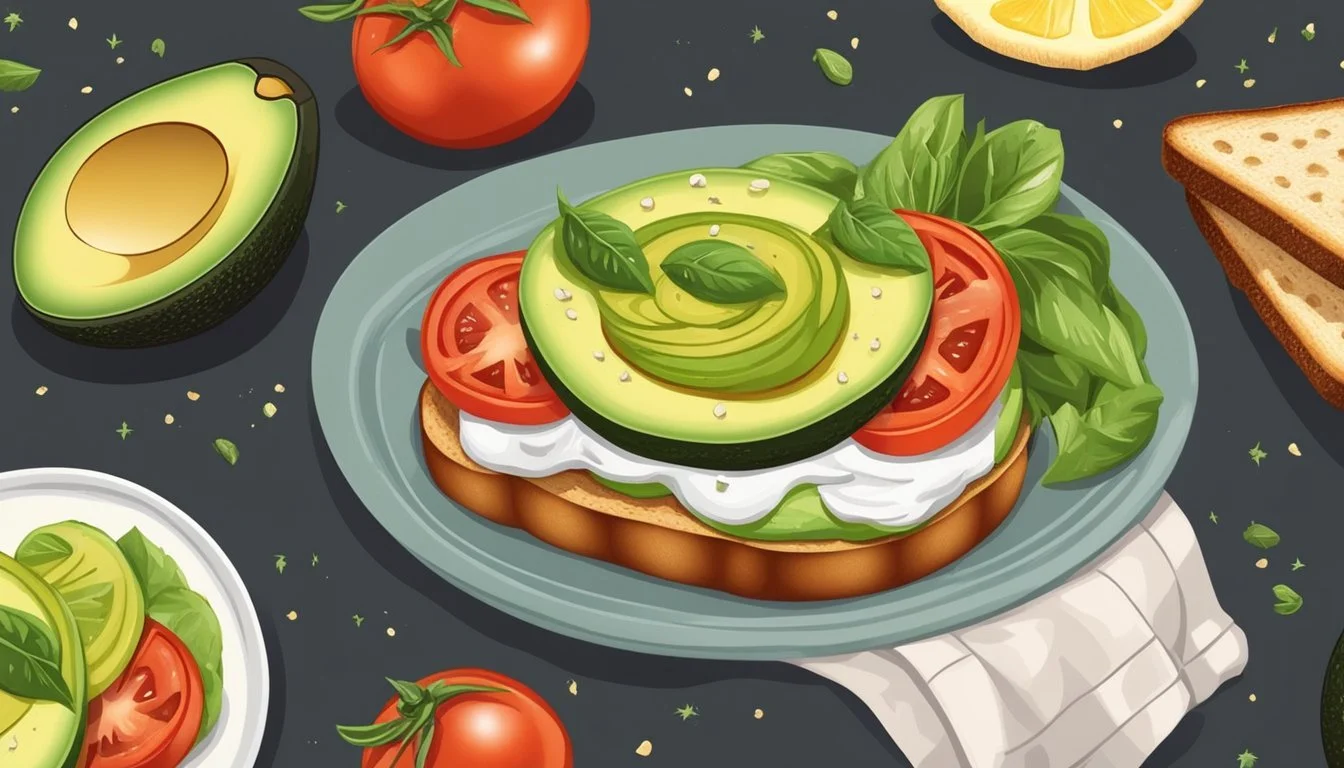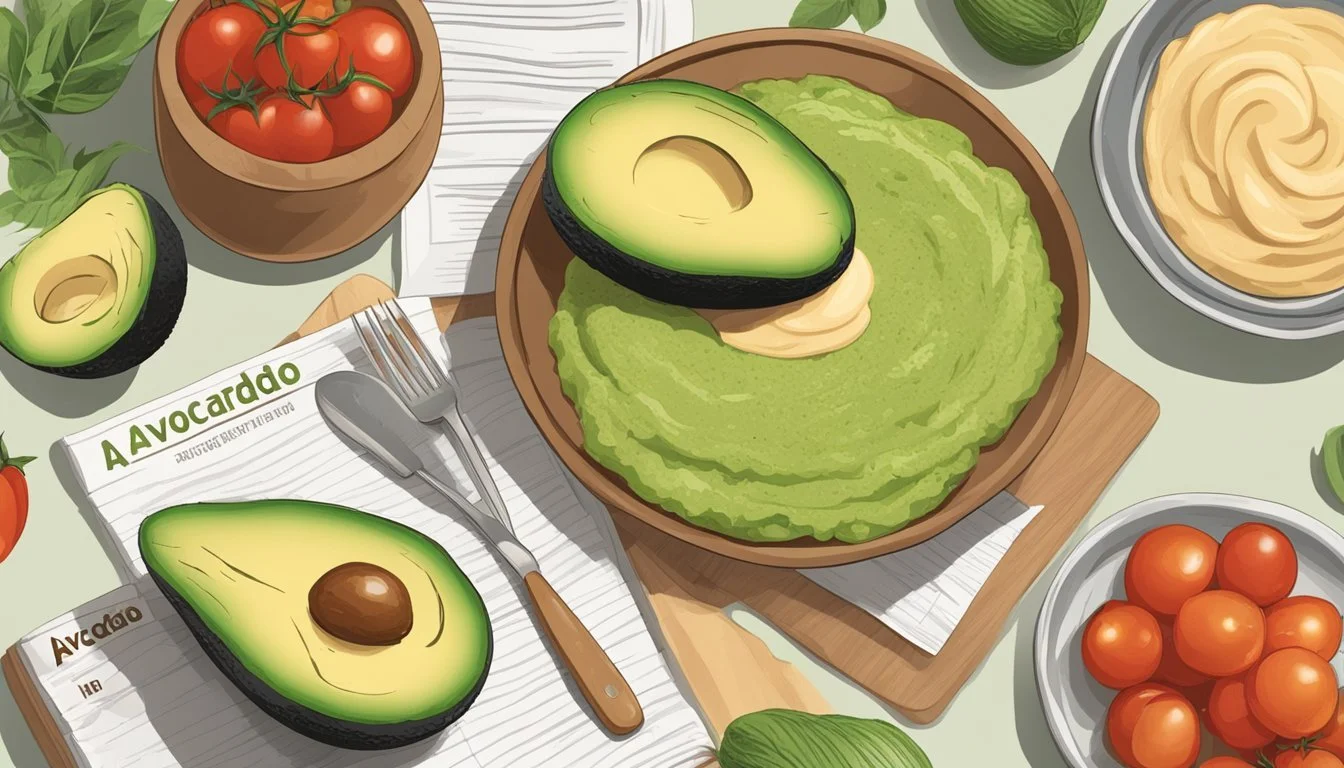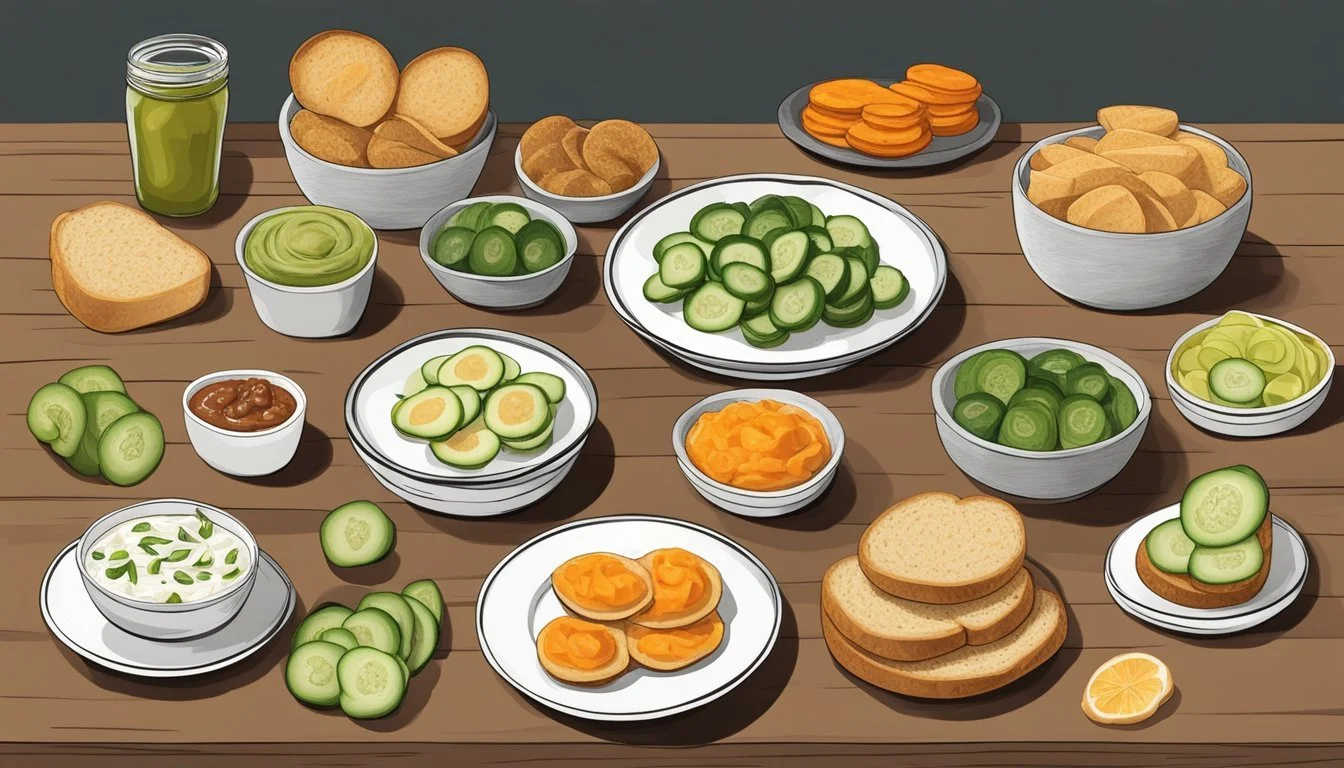Crostino Substitutes
Top Alternatives for Your Antipasto Platter
Crostini, the diminutive form of 'crosto' meaning 'crust' in Italian, refer to small pieces of toasted bread often used as a base for appetizers. These little toasts are traditionally made from baguette or similarly narrow loaves of bread, sliced thinly, brushed with olive oil, and then toasted until just crisp. They are a staple in Italian cuisine, offering a crunchy platform for a variety of toppings ranging from cheeses and meats to vegetables and spreads. The simplicity and versatility of crostini have made them a favorite for gatherings, acting as a delightful precursor to a meal or as finger food at parties.
However, dietary preferences or restrictions, availability of bread, or simply the desire to explore different textures and flavors may lead patrons to seek alternatives to the classic crostino. Such substitutes not only cater to diverse tastes and needs but also have the potential to inject new life into familiar dishes. Whether one opts for gluten-free options, different grains, or entirely bread-less variations, there's a wealth of creative possibilities that stay true to the spirit of Italian antipasti while bringing novel elements to the table.
In exploring substitutes for traditional crostini, it's important to consider how a replacement will interact with the proposed toppings and the overall balance of the appetizer. The chosen substitute should ideally complement the flavors of the topping and maintain a firm texture that holds up under various spreads and condiments without becoming soggy. Additionally, the shape and size of the substitute should facilitate easy handling and bite-sized enjoyment, staying true to the foundations of appetizer etiquette.
Understanding Crostini
Crostini are small, flavorful slices of toasted bread, often served as an appetizer in Italian cuisine. They provide a versatile base for a variety of toppings and are known for their satisfying crunch.
What Is Crostino?
A crostino is a single piece of crostini, which literally means "little crusts" in Italian. These are small pieces of bread that have been toasted to a crisp texture. Crostini are typically made by slicing a baguette or similar loaf of bread into thin pieces, brushing them with olive oil, and then baking or grilling them until they achieve a golden brown hue and crunchy exterior.
History of Crostino
The history of crostino dates back to medieval times in Italy when it was common practice to use bread as a plate. Over time, this method evolved, and the bread was toasted to be used as a base for various toppings. Crostini became popular as an appetizer, offering a sturdy foundation for an array of juicy and flavorful toppings without becoming soggy. They epitomize the Italian flair for transforming simple ingredients into elegant and appetizing dishes. The tradition of serving these "little crusts" continues to be a beloved part of Italian gastronomy.
Choosing the Right Bread
The foundation of a good crostino is selecting the right base. One needs to consider the type of bread, its freshness, and the texture and taste that will complement the toppings.
Baguette vs Italian Bread
A French baguette is traditionally long and thin with a crispy crust and a light interior, making it ideal for crostini that offer a noticeable crunch. Italian bread, typically broader and rounder, has a denser crumb and a softer crust. Both breads can serve well, but a baguette will provide a more classic crostino experience.
French Baguette: Crisp texture, light interior, elongated shape.
Italian Bread: Softer crust, dense texture, round shape.
Fresh vs Stale Bread
While fresh bread is often preferable for its taste and texture, stale bread can actually be an excellent choice for crostini. Stale bread is less likely to sag under the weight of toppings and crisps up beautifully in the oven.
Fresh Bread: Optimal for flavor and softer crostini.
Stale Bread: Perfect for a crisper texture and waste reduction.
Bread Texture and Taste
The texture of the bread dictates the bite of the crostini and should be considered based on the toppings' weight and moisture levels. A bread with a firmer** texture** can support heavier and wetter toppings without becoming soggy.
Crisp, Light Crust: Best for drier, lighter toppings.
Chewy, Dense Crumb: Suitable for robust, moist toppings.
The taste of the bread should complement the toppings, with neutral-flavored bread like a classic baguette serving as a versatile canvas for a variety of flavors. One must balance the bread’s inherent taste with the desired flavor experience of the finished crostino.
Bread Alternatives
When making Crostino, traditional bread can be replaced with various alternatives catering to health concerns or dietary preferences. These substitutes can range from gluten-free options to grain-based and vegetable-based alternatives, each providing unique flavors and textures.
Gluten-Free Options
Gluten-free breads are ideal for those with gluten sensitivities or looking for a lighter option. They typically involve a combination of non-gluten flours such as rice, almond, or coconut. For example:
Rye bread: Although rye contains gluten, it's often tolerated by people who have issues with common wheat bread.
Sourdough: Fermented with naturally occurring lactobacilli and yeast, sourdough has a lower gluten content compared to regular bread.
Grain-Based Substitutes
Grains offer hearty and nutritious bread substitutes that still give the satisfaction of traditional toast. They include:
Almond flour bread: A low-carb option, high in protein, often suited for keto diets.
Sprouted grain bread: This bread is made from whole grains that have started to sprout, increasing nutrient availability.
Vegetable-Based Alternatives
Vegetables provide inventive and health-conscious bread replacements that add a new dimension to Crostino. Popular choices include:
Cauliflower bread: Can be fashioned into tortillas and flatbreads, offering a neutral flavor profile that pairs well with various toppings.
Cauliflower pizza crust: A sturdy base that can be made crunchy, suitable for toppings typically enjoyed on Crostino.
Crostini Toppings and Variations
Crostini, the small, toasted pieces of bread, serve as the perfect canvas for an array of toppings. From classic combinations to creative vegetarian variations and rich meats, the possibilities for crostini toppings are diverse and customizable to cater to any palate or dietary need.
Classic Toppings
The foundation of any crostini topping repertoire begins with tomatoes and basil. Diced tomatoes, often mixed with a dash of olive oil, garlic, and chopped basil leaves, create a refreshing bruschetta—the quintessential Italian topping. For a richer flavor, chefs may combine ripe tomato slices with a drizzle of balsamic glaze.
Tomato Bruschetta: Chopped tomatoes, basil, olive oil, and garlic
Caprese: Tomato slices, mozzarella, and basil with balsamic reduction
Vegetarian and Vegan Options
Crostini can easily accommodate vegetarian and vegan diets. A popular vegetarian variant is to top with grilled vegetables such as zucchini or bell peppers. Vegan options may include ricotta-style spreads made from tofu or cashews, delivering a creamy texture without dairy.
Grilled Vegetable Crostini: Sliced, grilled vegetables with herbs
Vegan Ricotta Spread: Blended cashews or tofu, nutritional yeast, lemon juice, salt, and garlic
Cheese Varieties
Cheese is a staple in crostini toppings, offering a wide range of flavors and textures. Goat cheese is often whipped with honey for a sweet and tangy spread. Mozzarella provides a mild and creamy base, ideal for pairing with stronger flavors like roasted garlic or pesto. For a decadent touch, ricotta can be seasoned with lemon zest and herbs.
Honey Whipped Goat Cheese: Goat cheese and honey, ideally topped with fruit
Herbed Ricotta: Ricotta mixed with lemon zest, herbs, and seasoning
Meat and Seafood Suggestions
Those desiring a heartier crostini can opt for toppings featuring meats and seafood. Prosciutto or serrano ham creates a salty and savory contrast with sweeter elements like figs or melon. Additionally, smoked salmon or lump crabmeat adorned with a touch of dill and crème fraîche introduces delicate seafood flavors.
Prosciutto and Fig: Thin slices of prosciutto with fig spread or fresh figs
Crab and Dill: Lump crabmeat, light mayonnaise or crème fraîche, and dill
Using these categories as a starting point, hosts can offer guests a selection that appeals to a variety of tastes and dietary preferences. Each element can be assembled to create a delightful and visually appealing appetizer suitable for any gathering.
Preparation Techniques
Crostini can be made using various cooking methods to achieve their signature crispness. One’s choice of toasting, baking, or grilling impacts the flavor and texture of the crostini.
Toasting Methods
Toasting crostini involves dry heat which crisps the bread quickly. This can be done in a toaster oven or on a stovetop using a skillet. They should be monitored closely to prevent burning. The key is to toast them until they're lightly browned and crunchy. To ensure even toasting, one might flip the bread slices halfway through the toasting process.
Baking Instructions
When baking crostini, preheating the oven is crucial. A temperature of 400-450ºF (200-230ºC) is commonly recommended. One should arrange the bread slices on a baking sheet in a single layer and consider the following:
Thickness: Bake 6-9 minutes for ¼-inch slices; 8-12 minutes for ½-inch slices.
Flip: Turn the slices over halfway through to ensure even baking.
Observation: Keep an eye on the oven as baking time will vary.
A pastry brush can be used to coat the bread with olive oil, and seasoning such as salt, pepper, or herbs can be added before baking.
Grilling Essentials
Grilling imparts a smoky flavor to the crostini. Key steps when using a grill include preheating it to medium-high heat and preparing the bread slices as follows:
Brush: Lightly coat both sides of the bread with olive oil.
Grill: Place the bread on the grill, cooking each side for 3-5 minutes until grill marks appear and the slices are golden brown.
Rest: Remove from the grill and let them cool on a wire rack.
It’s vital to keep the slices under observation during grilling to prevent charring.
Crostini for Every Season
Crostini can be tailored to suit the seasonal bounty, offering a fresh and flavorful bite that showcases the best produce and flavors of the time of year.
Spring and Summer Crostini
In spring and summer, crostini toppings burst with vibrant freshness. Basil becomes a staple herb, contributing its aromatic touch to a variety of recipes. Cherry tomatoes and grape tomatoes are sweetest during these seasons, making them ideal for a simple yet impressive topping when paired with a drizzle of high-quality olive oil and a sprinkle of flaky sea salt. Other fresh vegetables like thinly sliced zucchini are also popular, offering a crisp texture and mild flavor that can be enhanced with lemon zest or a hint of garlic.
Key Spring and Summer Toppings:
Fresh basil
Grape and cherry tomatoes
Sliced zucchini
Bell pepper strips
Fall and Winter Variations
As the air chills, fall and winter crostini take on a heartier feel. Toppings may include roasted vegetables like bell peppers, which offer a sweet and smoky flavor. Mushrooms cooked in wine and garlic can be piled atop toasted crostini, potentially mixed with seasonal greens like broccoli. During these colder months, using ingredients such as hominy kernels can add a unique texture and a comforting taste to crostini, evoking the warmth and heartiness desired in winter fare.
Key Fall and Winter Toppings:
Roasted bell peppers
Sautéed mushrooms
Cooked greens and herbs
Hominy kernels
Flavor Pairings and Combinations
In crafting the perfect crostino, one must judiciously select complementing flavors. The following pairings and combinations serve as a guide to enhance the crostino experience through a harmonious balance of taste.
Herbs and Spices
Garlic: An indispensable aromatic that imparts a pungent kick, especially when paired with olive oil or creamy spreads like pesto.
Olive Oil: A staple in crostino making, this versatile base can be infused with herbs like rosemary or thyme to heighten the flavor profile.
List of Herb and Spice Pairings:
Rosemary and olive oil
Thyme and lemon juice
Basil and tomato
Oregano and roasted bell peppers
Sweet and Savory Spreads
Spreads are the heart of a crostino's flavor character.
Pesto: Its herby and nutty layers make it an excellent choice for a base spread.
Tapenade: This olive-based spread delivers a briny depth that is both bold and satisfying.
Honey: For a touch of sweetness, honey can be drizzled over savory toppings like cheese and tomato.
Spread Combinations:
Pesto with a dab of balsamic vinegar
Goat cheese and honey with a sprinkle of chopped walnuts
Tapenade topped with slivers of roasted bell pepper
Freshness from Fruits and Vegetables
Fresh produce elevates a crostino's freshness and adds a vibrant visual appeal.
Tomatoes: Fresh or cherry tomatoes provide acidity and freshness, and are a classic pairing with basil and olive oil.
Bell Pepper: Whether fresh or roasted, bell peppers add a sweet and smoky element to the crostini.
Pear: Thinly sliced pear atop a crostino offers a sweet contrast to rich, savory spreads like gorgonzola cream.
Fruit and Vegetable Suggestions:
Pear slices and gorgonzola, drizzled with honey
Cherry tomatoes, mozzarella, and a basil leaf, finished with balsamic glaze
Roasted bell peppers with garlic-rubbed crostini and a hint of lemon juice
Serving and Presentation Tips
When serving crostini as appetizers, the presentation can elevate the overall dining experience. The following tips focus on the arrangement on the plate and the addition of gourmet touches that can entice the palate.
Arrangement and Plating
One should arrange crostini on the serving platter in a manner that showcases their golden-brown texture. Utilize a serrated knife when slicing the bread to ensure clean cuts and consistent thickness. Extra virgin olive oil can be brushed on the bread before toasting to invoke a rich flavor and a crisp bite. If one chooses sea salt or kosher salt, it should be sprinkled lightly to enhance flavor without overwhelming the toppings.
Plating Style:
Linear: Crostini lined up in neat rows.
Circular: Arranged in a circular pattern, with the plate's center empty.
Random scatter: For a casual look, crostini can be scattered irregularly.
Optionally, a drizzle of balsamic glaze across the crostini adds both visual appeal and a tangy sweetness that complements many toppings.
Gourmet Touches
Adding gourmet elements to crostini can distinguish them as a memorable appetizer. One can choose fresh basil leaves as a garnish not only for their vibrant color but also for their aromatic freshness that pairs well with a variety of toppings. Additionally, incorporating a small ramekin of extra virgin olive oil for dipping or a selection of fine cheeses can offer guests a personalized eating experience.
Gourmet Elements:
Garnishes: Fresh herbs, edible flowers.
Dips: Olive tapenade, infused oils.
Textures: Top with crunchy vegetables or smooth spreads for contrast.
Presentation matters; serve crostini on aesthetically pleasing dishware that complements the occasion.
Nutritional Information
In assessing crostini substitutes, one should consider their nutritional makeup, specifically the calorie count and the potential for healthier options that align with dietary preferences or restrictions.
Calorie Count
The calorie content of a traditional crostini largely depends on the ingredients used. Typically, it is comprised of a slice of baguette, which contributes a significant portion of calories primarily from carbohydrates. A single small crostini can contain approximately 30 to 50 calories before toppings are added. If one opts for toppings, the caloric value can increase significantly, depending on the choice of toppings.
Healthier Crostini Options
For those seeking lower-calorie or healthier alternatives, there are substitutions that can be made:
Bread Substitutes: Replace the traditional baguette slice with options like whole grain, low-carb, or gluten-free bread to match specific health requirements.
Baking, not Frying: Baking crostini in the oven until crisp can cut down on the need for excess oil, making the snack less calorie-dense.
Fresh Toppings: Choosing fresh vegetable-based toppings such as diced tomatoes, cucumbers, or spinach can contribute to a more nutritious profile with the added benefit of vitamins and fiber.
It is important for an individual to select a crostini substitute that not only meets their caloric needs but also their nutritional preferences, ensuring a balance between healthfulness and enjoyment in their choice of food.
Crostini and Dietary Restrictions
When considering dietary restrictions, one must adapt crostini recipes to meet gluten-free and lactose-free requirements without compromising the integrity of this classic appetizer.
Gluten-Free Adjustments
For individuals with gluten intolerance or celiac disease, traditional crostini made from baguettes is off-limits. Substituting the bread base with slices from a gluten-free loaf ensures that everyone can enjoy crostini. Breads made from rice flour, almond flour, or a mix of gluten-free flours offer suitable alternatives. It's important to toast these slices just until they are golden to provide the needed crunch. Gluten-free crostini can be topped with a variety of spreads and toppings like hummus, tapenade, or fresh tomatoes.
Lactose-Free and Dairy Alternatives
Those who are lactose intolerant or following a dairy-free diet can substitute dairy toppings with lactose-free cheese or dairy-free options such as vegan cream cheese, which is often made from nuts or soy. For a classic goat cheese crostini, one might use vegan cheese alternatives that mimic the soft texture and tangy flavor of goat cheese.
Vegan cheese spreads made from cashews or almonds can replace soft cheeses.
Olive oil, with herbs and garlic, can offer a flavorful substitute for butter.
In summary, by selecting the right bread alternatives and dairy substitutes, crostini can be tailored to fit various dietary needs including gluten-free and lactose-free diets.
Recipes and Cooking Guides
This section offers comprehensive cooking guides for crafting perfect crostini appetizers, including diverse recipe options, step-by-step instructions, and recommendations for homemade toppings.
Step-by-Step Crostini Recipes
The foundation of a good crostini lies in its bread base. One begins by preheating the oven and slicing a baguette or loaf of bread into thin pieces. These slices are then arranged on baking sheets and brushed with high-quality olive oil. For added flavor, one might sprinkle on some sea salt, cracked pepper, or dried herbs. The bread is then toasted in the oven until it achieves a golden hue, typically for 1 to 2 minutes.
Recipe Variations
Crostini can be personalized in many ways:
By Bread Type: Whole wheat, sourdough, or gluten-free bread can be used for diverse dietary preferences.
Grill Method: For a smoky flavor, crostini can be grilled over medium heat, flipping once to ensure even grill marks on both sides.
Flavor Infusions: One might infuse the olive oil with garlic or herbs before brushing it onto the bread for a more intense flavor.
Homemade Toppings
The topping choices for crostini are limitless, but here are a few homemade options:
Savory: Sautéed mushrooms with garlic, ribboned basil, and grated Parmesan.
Sweet: A blend of goat cheese and honey, topped with sliced peaches.
Custom Blend: Combining roasted vegetables, such as broccoli and hominy, tossed in a light dressing, for a textured and flavorful topping.
Frequently Asked Questions
In this section, readers will find answers to common questions about storage and freshness, preparation tips, and substitution options for crostini, ensuring that their culinary endeavors are both successful and enjoyable.
Storage and Freshness
Q: How can one keep crostini fresh after baking?
A: Crostini should be stored in an airtight container at room temperature. They can last up to a week, but for maximum freshness, they should be consumed within 2-3 days.
Q: Can crostini be frozen for later use?
A: Yes, crostini can be frozen in a sealed bag or container. To use, reheat in an oven until crisp.
Common Preparation Questions
Q: Is it necessary to use olive oil when making crostini?
A: Olive oil enhances flavor, but if unavailable, alternatives like melted butter or vegetable oil can be used.
Q: What is the ideal thickness for slicing bread for crostini?
A: Bread slices should be approximately ¼-inch for the perfect balance of crispness and structural integrity.
Substitution Queries
Q: What breads can be used as substitutes for a traditional baguette in crostini?
A: Sourdough, ciabatta, and rustic loaves are great alternatives, as long as the slices are even and not too thick.
Q: If one does not have an oven, how else can crostini be prepared?
A: Crostini can also be made in a toaster oven or pan-toasted on a skillet over medium heat until crisp.
Advanced Techniques and Pro Tips
In the realm of gourmet crostini making, the subtleties of technique and ingredient choice can profoundly influence texture and flavor. Mastering a few advanced techniques ensures that one produces crostini that stands out both as a carrier for toppings and as a delightful component in its own right.
Culinary Tricks
Pre-toasting Bread Cuts: One should lightly toast their bread slices before adding any oil or toppings. This dry run in the oven or on the grill provides a sturdier base, which prevents sogginess once topped.
Choice of Bread: While a traditional baguette is common, experimenting with different artisanal bread such as ciabatta or pumpernickel can add unique flavors and textures.
Maximizing Flavor and Texture
Oil Selection & Application:
Using high-quality olive oil, one should brush the slices evenly, ensuring each piece is coated but not saturated.
Infused Oils: Elevating flavor complexity by using oils infused with herbs, garlic, or chili.
Layering for Texture:
For a crunch that defies expectations, layer flavors and textures by incorporating ingredients like seeds or finely grated cheese prior to the final toasting.
A balance between a tender interior and a crisp edge is the ultimate goal.
By adhering to these nuanced techniques, one will consistently create an exceptional base for an array of exquisite crostini toppings.










